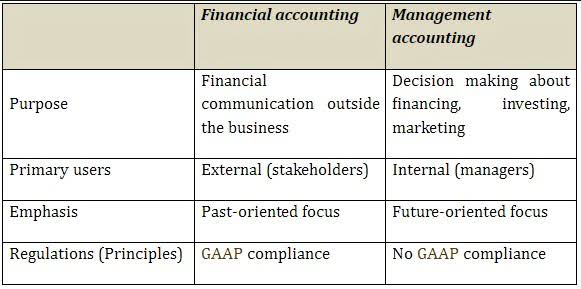
Clear guidelines should be established for tasks such as making change, handling refunds, processing discounts, and voiding transactions. Documenting these procedures in a written manual ensures that all employees have a clear understanding of their responsibilities and the correct way to handle cash. This consistency in cash handling practices significantly reduces the likelihood of errors and discrepancies. By closing the Cash Short and Over account to the Income Statement, businesses ensure that the financial statements accurately reflect the impact of cash discrepancies on their financial performance. This process provides a clear picture of the business’s profitability and helps stakeholders make informed decisions. The closing entry for the Cash Short and Over account involves debiting the Cash Short and Over account and crediting the Income Summary account (or the specific revenue or expense account).
Example of the Cash Ratio
CCE is, after all, a measure of a short-term position, since the assets all have life spans of 90 or fewer days. Investigating a company’s cash position is a good way to understand whether they are well prepared to deal with short-term cash needs. Investors generally look to industry norms to get a sense of whether a company is taking a reasonable approach. This is because different industries will have different cash pressures and potential short-term liabilities that companies will HVAC Bookkeeping need to be prepared to account for. Building a very strong cash position can also create pressure from shareholders to pay dividends or issue stock buybacks, which are ways of returning capital to shareholders.

What Are Considered Allowable Living Expenses?
- These trends might also signal more serious concerns, including potential theft or misappropriation of funds, which warrant further investigation.
- The company has more cash and cash equivalents than current liabilities when its cash ratio is greater than one.
- It’s a key indicator of a company’s financial performance and ability to generate value for shareholders.
- The cash ratio indicates the company’s ability to pay all of its current liabilities immediately without having to sell or liquidate other assets.
For example, at the end of the month, the receptionist of the company ABC needs to request reimbursement to refill the petty cash fund of $100. Learn to accurately identify, calculate, and manage discrepancies between your actual and expected cash. In 2022, Gensight Biologistics, a French biopharma company, reported its cash position as of 31st December 2022 and revenues for 2022. Hence, the company has €12 million premium convertible notes with Heights Capital and €35 million conditional loan from the European Investment Bank. Thus, the CFO admitted to having secured good funding with minimal dilution. Please note that depreciation and other non-cash items are not included in the cash budget.

Cash over and short journal entry
As the quick ratio only wants to reflect the cash that could be on hand, the formula should not include any receivables that a company https://egw.coconet-us.org/week-4-preparing-the-trial-balance-and-the-balance/ does not expect to receive. However, it’s important to note that not all current assets are cash and cash equivalents, as entries like accounts receivable will also be there. You might find some of the same asset accounts under current assets and noncurrent assets on a balance sheet because those same types of assets might be tied up for a longer period. They might include a marketable security that can’t be sold in one year or that would be sold for much less than its purchase price. Current assets are always located in the first account listed on a company’s balance sheet under the assets section. Apple, Inc. lists several sub-accounts under current assets that combine to make up total current assets.
- Modern finance tools like BILL can provide even more insight into how your business is managing cash flow, with real-time reporting, future-focusing forecasting, and spend management functionality.
- Liquidity is a measurement of a company’s ability to pay its current liabilities.
- The procedures should also address the segregation of duties, ensuring that no single individual has complete control over the cash handling process.
- It looks at only the most liquid assets—things that can be quickly turned into cash—like money in the bank and payments from customers that will arrive soon.
- Current assets are economic benefits that the company expects to receive within the next 12 months.
- And one of the simplest ways to measure cash flow is a formula called the cash-on-cash return (CoC for short).
AccountingTools

Though other liquidity ratios measure a company’s ability to be solvent in the short term, the quick ratio is among the most aggressive in deciding short-term liquidity capabilities. Whether accounts receivable is a source of quick, ready cash remains a debatable topic, and it depends on the credit terms that the company extends to its customers. A company that needs advance payments or allows only 30 days for customers to pay will be in a better liquidity position than a company that gives 90 days. The quick ratio evaluates a company’s ability to meet its current obligations using its most liquid assets. Cash and cash equivalents are found at the top of a company’s balance sheet, under current assets. Cash and cash equivalents are listed on a company’s balance sheet, under current assets.

As for which assets to include, there are generally accepted accounting rules about how to calculate cash short and over this. Property, plants, buildings, facilities, and equipment are all examples of non-current assets because they can take a significant amount of time to sell. Non-current assets are also valued at their purchase price because they’re held for longer times and they depreciate. Most major new projects, like expanding production or entering into new markets, often require an upfront investment, reducing immediate cash flow. Therefore, companies needing extra capital or using working capital inefficiently can boost cash flow by negotiating better terms with suppliers and customers.
- Cash and cash equivalents are calculated simply by adding up all of a company’s current assets that can reasonably be converted into cash within a period of 90 or fewer days.
- If these liquid funds are converted into investments, they work like a safety mechanism and offer reasonable returns.
- This is because it will help such firm to see its cash position frequently and planned ahead for any funding requirements or needs for its operation.
- This transaction is telling us that what we have “on hand” in our supply closet is $1,250 worth of supplies.
- The balance in the Cash Short and Over account at the end of an accounting period provides valuable insights into the effectiveness of a business’s cash management practices.
For example, if a cash drawer should contain $600 but only $595 is found, the drawer is cash short by $5. A company has more cash on hand, lower short-term liabilities, or a combination of the two. It also means a company will have a greater ability to pay off current debts as they come due.
